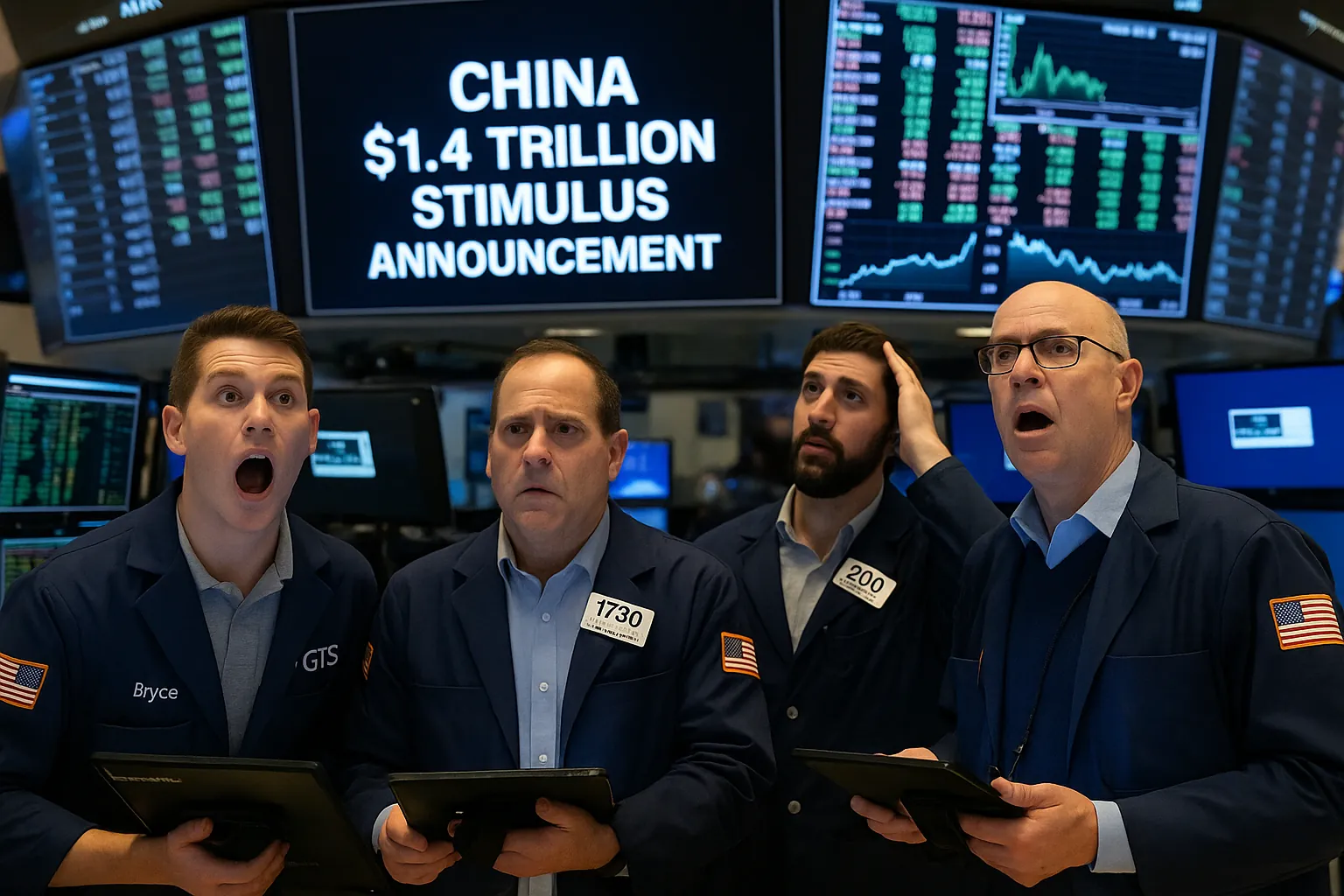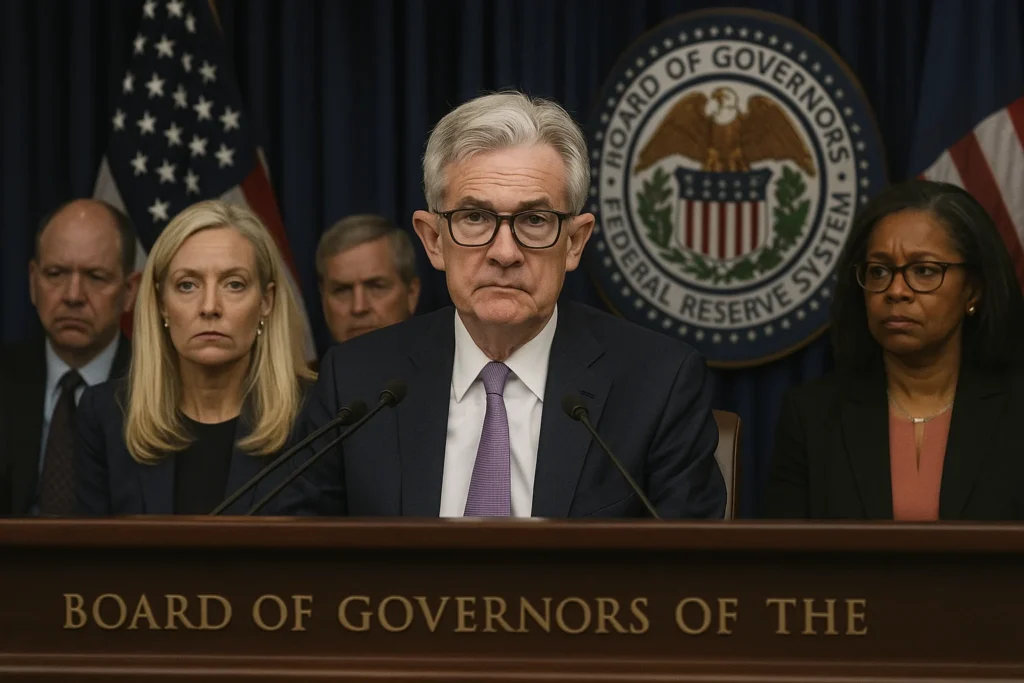China’s new $1.4 trillion stimulus package has set global markets ablaze with optimism. The phrase China stimulus package dominates every trading desk and financial newsroom this weekend. Stocks soared from Shanghai to Wall Street. Yet behind the euphoria lies a harder truth — one that Beijing may not want the world to see.
Context: Beijing’s trillion-dollar move
Beijing’s latest stimulus package promises to pour money into infrastructure, consumer spending, and technology sectors. The National Development and Reform Commission unveiled what it called a “stabilization push” after months of weakening domestic demand and youth unemployment exceeding 20%.
Asian markets jumped instantly: the Hang Seng rose nearly 5%, the Nikkei hit a two-year high, and European indexes followed. Even the S&P 500 gained over 1.7%, erasing fears of a global slowdown.
Mainstream media hailed it as proof of Beijing’s economic strength — a confident return to Keynesian intervention. But what they won’t say is that this may be China’s last major fiscal bullet.
Oppositional Argument: the illusion of strength
Let’s be clear: this is not growth, it’s adrenaline. Every past stimulus package — from 2008 to 2020 — inflated China’s debt mountain. Local governments are already suffocating under unpaid bills. Shadow banking giants like Zhongzhi collapsed under pressure earlier this year, leaving trillions in uncertain liabilities.
Officials call this “targeted expansion.” In reality, it’s emergency CPR on an exhausted system. Chinese citizens have stopped spending not because they lack cash — but because they’ve lost faith. Apartment values have plummeted, youth can’t find stable jobs, and social trust has evaporated.
Stimulus cannot rebuild trust. It can only buy silence.
Analytical Breakdown: where the money goes — and what it hides
Out of the $1.4 trillion, nearly half will fund infrastructure megaprojects: high-speed rail lines, bridges, and industrial parks. The rest targets consumer subsidies and “green” manufacturing.
But these sectors are already oversaturated. China has enough steel plants, enough ghost cities, enough highways to nowhere. What it lacks is domestic confidence and transparent governance.
Foreign investors know it. According to the Institute of International Finance, capital outflows reached $75 billion last quarter — the fastest pace in years. Beijing’s heavy hand in capital controls has only intensified the perception that the country is closing itself off.
When markets rise on debt rather than productivity, it’s not recovery — it’s illusion.
Counterarguments
Some economists argue that any injection of liquidity will boost global trade and stabilize commodity prices. After all, China consumes over 50% of the world’s copper and steel.
That’s true — temporarily. But such relief is fleeting. Once the spending spree ends, demand will collapse again. The world is not watching a Chinese comeback. It’s watching a temporary high that delays an inevitable reckoning.
Human Perspective: the fragile face of recovery
In Chengdu, a 32-year-old construction worker told Reuters he’s been rehired after months of unemployment. “They say more bridges, more tunnels, more jobs,” he said. “I just hope it lasts longer than last time.”
It’s the same fragile optimism that swept through China in 2008 — and again after the COVID lockdowns. Then came layoffs, defaults, and more empty apartment blocks.
Ordinary Chinese families now treat stimulus like weather: unpredictable, uncontrollable, and distant. The wealth gap has widened. Urban youth rely on gig jobs; rural migrants face shrinking wages.
Stimulus packages may lift GDP, but they rarely lift lives.
Global Repercussions: markets celebrate, policymakers worry
Western investors are celebrating, but central bankers are uneasy. The Federal Reserve, already battling inflation, now faces the risk of renewed commodity shocks. The European Central Bank fears capital flight into Asian markets.
Gold prices dipped as traders shifted to equities, yet the underlying message is clear — the world’s dependence on China remains both vital and dangerous.
If Beijing succeeds, global trade revives. If it fails, a deflationary wave will hit every economy tied to Chinese demand — from German carmakers to Chilean copper exporters.
Conclusion: Beijing’s dangerous bet
This China stimulus package may buy a year of growth — maybe two. But it’s not reform; it’s relapse. A trillion-dollar bandage on a deep structural wound.
The West cheers because it wants China to keep consuming. Beijing acts because it can’t afford not to. Both sides are pretending this is strength when it’s actually survival.
The question is not whether China can spend — but how long it can pretend.
External Links
- Bloomberg — China Stimulus Package Boosts Global Markets
- Reuters — China’s Economic Stimulus Spurs Market Surge
43 views






